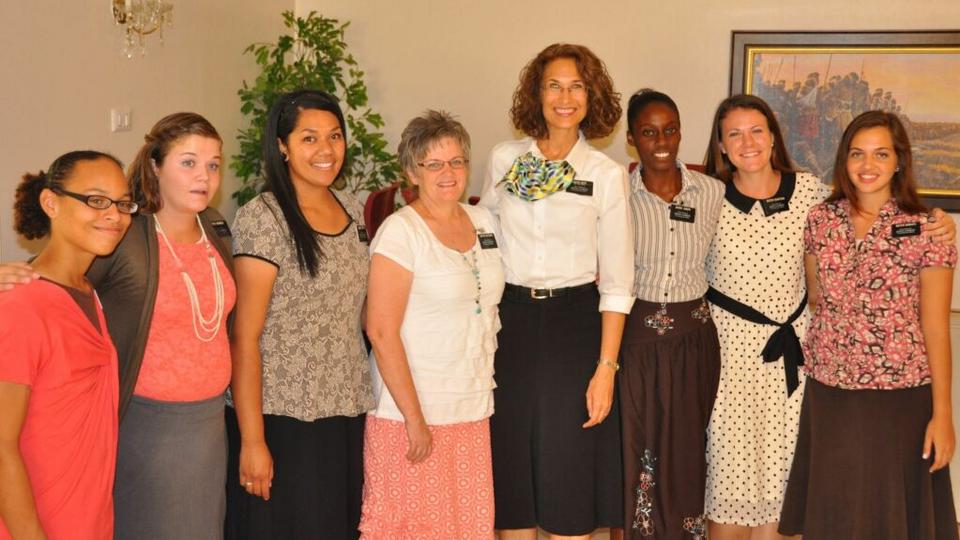
Rebecca Mehr 1
Rebecca Mehr (center right) stands with sister missionaries and members while serving with her husband as mission leaders in Suriname in 2012. Photo courtesy of Rebecca Mehr, courtesy of Church News. All rights reserved.This story appears here courtesy of TheChurchNews.com. It is not for use by other media.
By Rebecca Mehr of the Relief Society general board, Church News
Editor’s note: This narrative is part of a Church News series titled “Women of Covenant,” in which women of the Church discuss their personal experiences with priesthood power and share what they have learned through following President Russell M. Nelson’s counsel to “labor with the Spirit to understand God’s power — priesthood power” (“Spiritual Treasures,” general conference, October 2019).I was gathered with a group of wonderfully dedicated, faithful sister missionaries in Suriname in the late summer of 2012. My husband and I were serving as mission leaders of the West Indies Mission, and I had begun to notice a common theme in the questions from these faithful, dedicated young sisters.
“I feel like an interloper. Am I really supposed to be here?” “Will I ever be as good at teaching the gospel as the elders are?” “Can I really do this?” These women wanted to know whether they belonged, what their role was and how they were needed in missionary work.
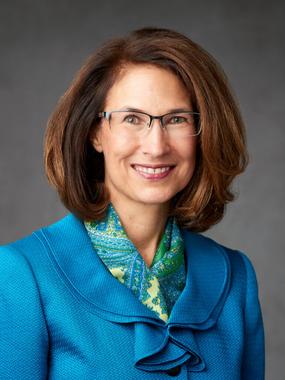
Rebecca Mehr 2
Rebecca Mehr, Relief Society general board member. 2020 by Intellectual Reserve, Inc. All rights reserved.
Then, in October 2012, President Monson made the momentous announcement that sisters could be called to serve at age 19 instead of 21. As our mission surged with younger missionaries, both elders and sisters, I began to notice a fascinating difference — those questions of belonging and purpose largely disappeared. I concluded that these young women felt warmly welcomed by a prophet of God to missionary service, and as a result, did not doubt their contribution or their purpose.
As women, many of us have similar questions regarding our participation in the work of salvation and exaltation, or in the Church in general. What is my role? How do I contribute? And by what authority? And can I actually access God’s power to do His will?
Faithful, covenant women access God’s power every day; we just haven’t typically called it priesthood power. I’m thrilled that President Russell M. Nelson is inviting women to study and understand the priesthood authority they are given, as well as their access to God’s power, or priesthood power.
It’s been helpful for me to try to be precise when studying and talking about priesthood. What does a specific word or scriptural phrase really mean? For example, I try to differentiate between priesthood authority and priesthood power.
With our sister missionaries in the West Indies, we explained that their calling and setting apart by one holding priesthood keys gave them priesthood authority — permission or license — to teach the gospel. But to be effective missionaries, they needed access to God’s power, or priesthood power, which is available through covenants. And through our intentional efforts to keep those covenants, each one of us can grow in our capacity to draw on God’s power.
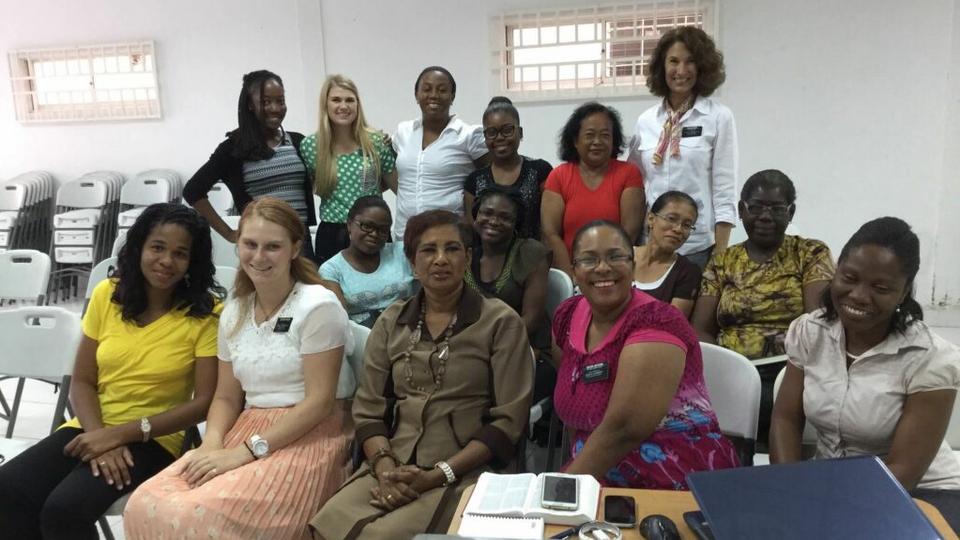
Rebecca Mehr 3
Rebecca Mehr (back right) stands with sister missionaries and members while serving with her husband as mission leaders in Suriname in 2012. Photo courtesy of Rebecca Mehr, courtesy of Church News. All rights reserved.Brother Tad Callister, an emeritus General Authority Seventy and former Sunday School general president, made this connection: “Participation in the saving ordinances unlocks and unleashes certain powers of godliness in our lives that are not available in any other way” (“Our Identity and Our Destiny,” BYU devotional, August 14, 2012).
Since childhood, I recognized that I could always “have [God’s] Spirit to be with [me]” (3 Nephi 18:7). This godly power had been “unlocked and unleashed” for me through my covenants of baptism and receiving the gift of the Holy Ghost. God’s power and spirit were manifest in my life through answers to prayers, guidance in my life decisions and loving reassurance in times of trouble.
Through subsequent covenants and ordinances, additional powers of godliness have been “unlocked and unleashed” for me. As a young single woman, I entered God’s holy temple and received an endowment of power, a gift of knowledge how to become like Him. When I was set apart as a full-time missionary, my heart filled with great love for the people of France and a deep desire to share the gospel with them. Later, when called and set apart to be a ward Young Women president, I was blessed to be perceptive to the spiritual needs of nine young girls.
In each case, a priesthood ordinance provided access to priesthood power.
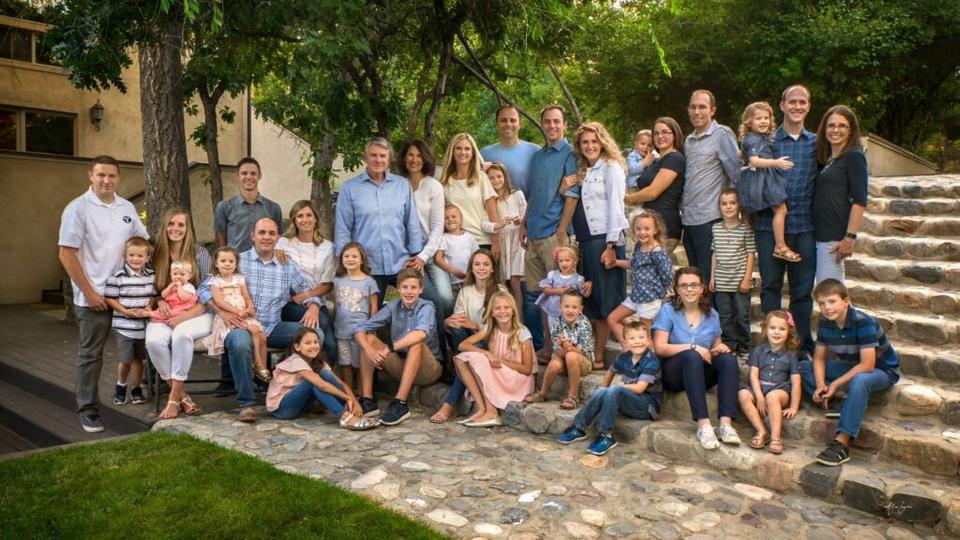
Rebecca Mehr 4
Rebecca Mehr with her family. Photo courtesy of Rebecca Mehr, courtesy of Church News. All rights reserved.Sometimes sisters are hesitant to state with clarity that they have been given priesthood authority by the priesthood leader holding keys who set them apart, or that they have access to priesthood power through their righteous efforts. In my opinion, this hesitancy is because sisters are not accustomed to thinking about themselves this way, and it feels somehow disrespectful or inappropriate. And yet, this is precisely what our prophet is pleading with us to understand and act upon.
What does God’s power look like in the lives of righteous women? It is very different from the world’s definition of power. It is not about visibility or hierarchy. It is about impact. It is soul-to-soul lifting and loving. It is teaching in the moment, one-on-one listening, understanding and discerning. It is inspiring and leading groups of women, men and children. It is straining to hear the whisperings of the spirit and acting in courage on each small thought, all with the intent to point others to Christ. That is God’s power.
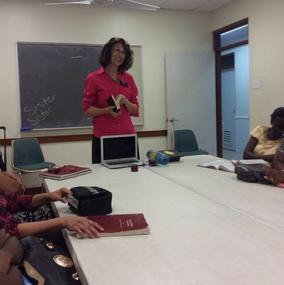
Rebecca Mehr 5
Rebecca Mehr teaches a group of sister missionaries and members while serving with her husband as mission leaders in Suriname in 2012. Photo courtesy of Rebecca Mehr, courtesy of Church News. All rights reserved.We have long been taught that as women, we can receive personal revelation, be led, comforted and taught by the Spirit, and develop spiritual gifts — for our own guidance and blessing. Now we are invited by a prophet to apply that spiritual capacity in councils and congregations. Knowing that “priesthood authority” and “priesthood power” also apply to women opens our eyes to the truth that we are essential partners with the brethren in the work of salvation and exaltation.
Copyright 2020 Deseret News Publishing Company